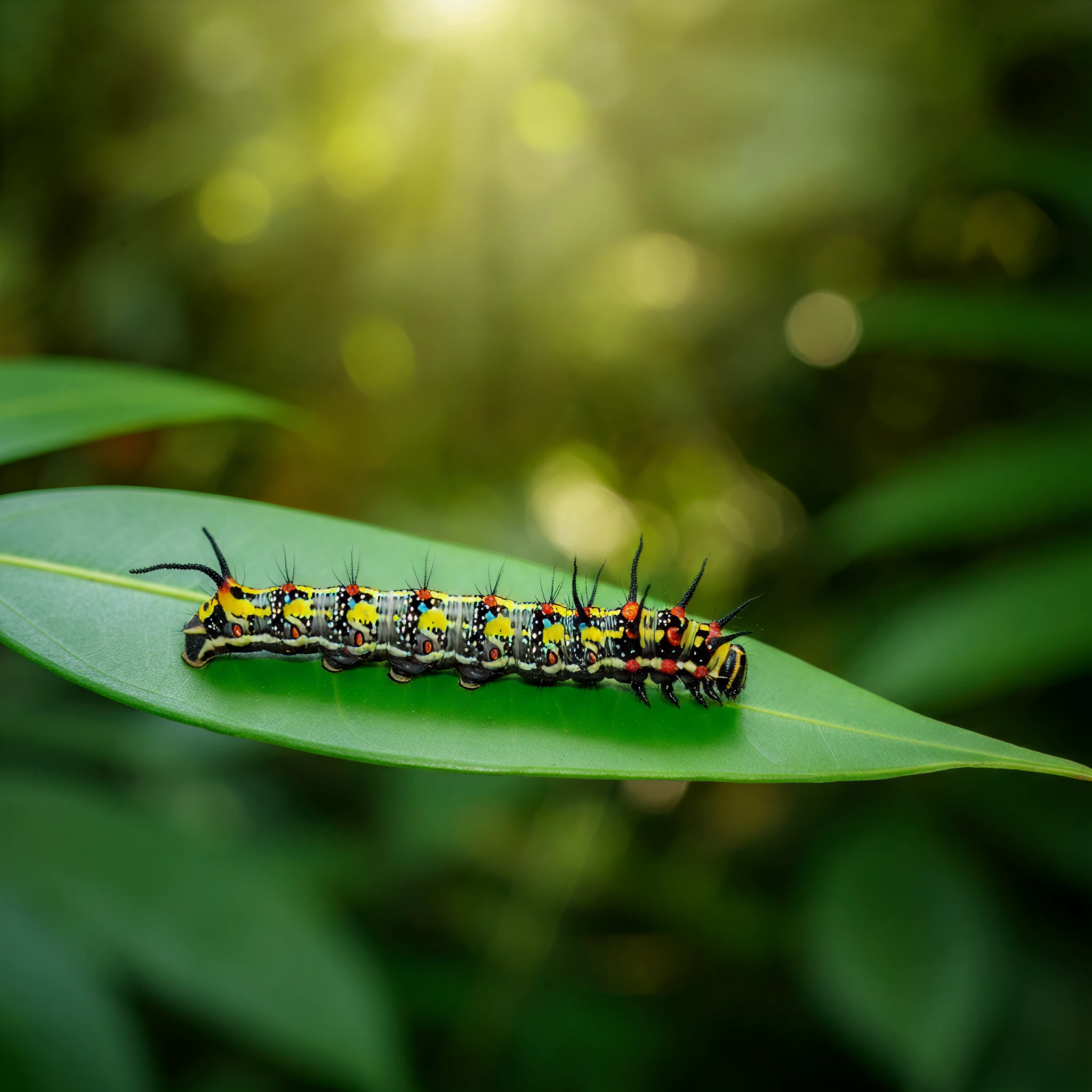A groundbreaking discovery in the rainforests of Hawaii has surprised scientists and nature enthusiasts alike. Researchers from the University of Hawaii at Manoa have unveiled a new species of caterpillar, unique for its eerie behavior of wearing dead bugs as camouflage and thriving inside spider webs. Dubbed the “bone collector” caterpillar, this peculiar insect is a fascinating example of evolution defying expectations.
A Remarkable Discovery
This fascinating caterpillar belongs to the genus Hyposmocoma and was first documented by lead researcher Daniel Rubinoff and his team. The caterpillar’s bizarre lifestyle and adaptations have been detailed in a paper published in Science. Found exclusively on a single mountain range in the Waiʻanae region of Oʻahu, this species is part of a rare lineage dating back over six million years.
What sets this caterpillar apart is its unusual use of camouflage. It collects insect parts and discarded spider skins to armor its silken case, blending seamlessly into its predatory environment within spider webs. This ingenious adaptation keeps the caterpillar hidden from both predators and its arachnid landlords, allowing it to feed on small insects ensnared by the web without falling prey to the spiders themselves.
Carnivorous Behavior and Adaptation
Most caterpillars are plant eaters, making this species a rarity in the insect world. Only 0.13% of caterpillars are carnivorous, and the bone collector’s feeding behavior is even more extreme. Living amongst venomous spiders, it scavenges or preys on insects trapped in the web, adapting to a lifestyle scientists liken to “hiding in the lion’s den.”
Its presence in this hostile environment highlights the incredible adaptability of life in isolated ecosystems like Hawaii, where species evolve in unique ways to survive.
A Fragile Existence
While this discovery is undoubtedly a marvel of nature, the survival of this ancient species is under severe threat. Human activities such as deforestation and the introduction of invasive species have dramatically altered Hawaii’s ecosystems. These invasive plants, animals, and pests have transformed native forests into environments that local species struggle to inhabit. Such disruptions have seen Hawaii dubbed the “extinction capital” of the world.
However, the bone collector caterpillar has managed a degree of adaptation, learning to coexist with non-native spider species. But its limited range, confined to just a 10-mile (16-kilometer) section of forest, makes its survival precarious. Without necessary interventions, this incredible species could vanish forever.
Future Research and Conservation
Daniel Rubinoff emphasizes the need for greater funding and focus on conserving such rare species. His team believes that studying the bone collector caterpillar’s genetics could unlock answers about its unique behavioral adaptations, from recognizing and crafting its camouflage to metabolizing a carnivorous diet. Such insights could provide a wealth of knowledge about evolution and ecological resilience in isolated habitats.
Conservation efforts must also focus on safeguarding Hawaii’s native biodiversity, restoring native forests, and controlling invasive species. These measures are critical in ensuring that species such as the bone collector caterpillar continue to thrive.
A Testament to Nature’s Ingenuity
The discovery of the bone collector caterpillar serves as a powerful reminder of the wonders hidden in nature, offering a glimpse into the extraordinary adaptations life can develop under unique circumstances. From wearing insect “armor” to thriving alongside predators, this caterpillar has rewritten the rules of survival.
But its story also underscores the fragility of these ecosystems and the urgent need for conservation. Protecting such rare species is not just about preserving the past but securing a future where the balance of nature continues to inspire and amaze.
To learn more about the bone collector caterpillar and how to support conservation efforts, explore our resource links below.
Suggested Images for the Article:
- A close-up of the bone collector caterpillar adorned in its “bug armor.”
- The caterpillar hidden within a spider web, demonstrating its camouflage.
- Researchers at work in the University of Hawaii’s Rainforest laboratory.
This discovery showcases the breathtaking diversity of our planet and reminds us why understanding and preserving these marvels is more important than ever.








